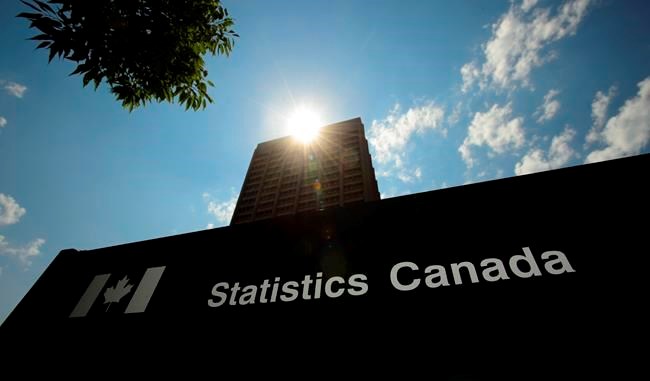OTTAWA — The annual pace of inflation stayed largely grounded for July at 0.1 per cent, held down by the first drop in air travel prices in almost five years, Statistics Canada said Wednesday.
The reading was down from a year-over-year increase of 0.7 per cent in June. The average economist estimate had been for a year-over-year increase of 0.5 per cent for July, according to financial data firm Refinitiv.
Air travel prices fell in July by 8.6 per cent — the first year-over-year decline since December 2015 — due to airlines offering incentives for people to travel again, including reduced fees, discounts and promotions even as many flights remained cancelled or suspended because of the pandemic.
Similarly, prices for traveller accommodations were down 27 per cent compared with July 2019, marking the third straight month of declines as Canadians opted for staycations.
In a demand-constrained environment, businesses are going to be caught in a tug of war between covering higher operating costs and providing discounts and incentives to attract consumers, TD senior economist James Marple said.
Last month, price discounts won out.
"What you're starting to see is activity is slowly normalizing, but drawing people back to activities that still have some risk factor, obviously, price adjustments are continuing to happen in those industries," Marple said in a telephone interview.
Anna Feng, an economist with the Conference Board of Canada, said in a statement that prices may go up over the near-term as businesses pass on higher operating costs due to the pandemic.
Statistics Canada said the slower pace of price growth in July was broad-based, spanning goods and services.
Gasoline prices were down by 14.9 per cent compared with a year ago, as surging COVID-19 infections in other parts of the world heightened concerns that demand would plummet. Excluding the drop in gasoline prices, the inflation barometer compared with a year ago was up 0.7 per cent for July.
Annual prices for meat rose at a slower pace in July than June largely due to production ramping up again following plant closures caused by spikes in infection rates among workers.
The average of Canada's three measures for core inflation, which are considered better gauges of underlying price pressures and closely tracked by the Bank of Canada, was 1.6 per cent, staying relatively steady since April.
The figures are below the Bank of Canada's two per cent inflation target, but the central bank has warned that the price index readings are going to be low for this year and next.
Governor Tiff Macklem has said the central bank will maintain its key interest rate at the lower limit of 0.25 per cent until inflation gets back into the Bank of Canada's target range.
"If weak prices are any indication, the economy is now more fully reflecting the higher unemployment rate and resulting depressed demand," CIBC senior economist Royce Mendes wrote in a note.
"As a result, the road back to the Bank of Canada’s target could be a long and winding one for inflation."
In a separate report, Statistics Canada said wholesale sales rose 18.5 per cent in June to $62.1 billion to bring them near their pre-pandemic levels.
The agency said all seven subsectors saw higher sales for the first time since November 2017 as the motor vehicle and motor vehicle parts and accessories subsector led the growth in dollar terms.
Wholesale sales volumes were up 18.8 per cent.
This report by The Canadian Press was first published Aug. 19, 2020.
Jordan Press, The Canadian Press
Note to readers: This is a corrected story. An earlier version incorrectly compared the July inflation figure excluding gasoline with the overall inflation figure for June.



